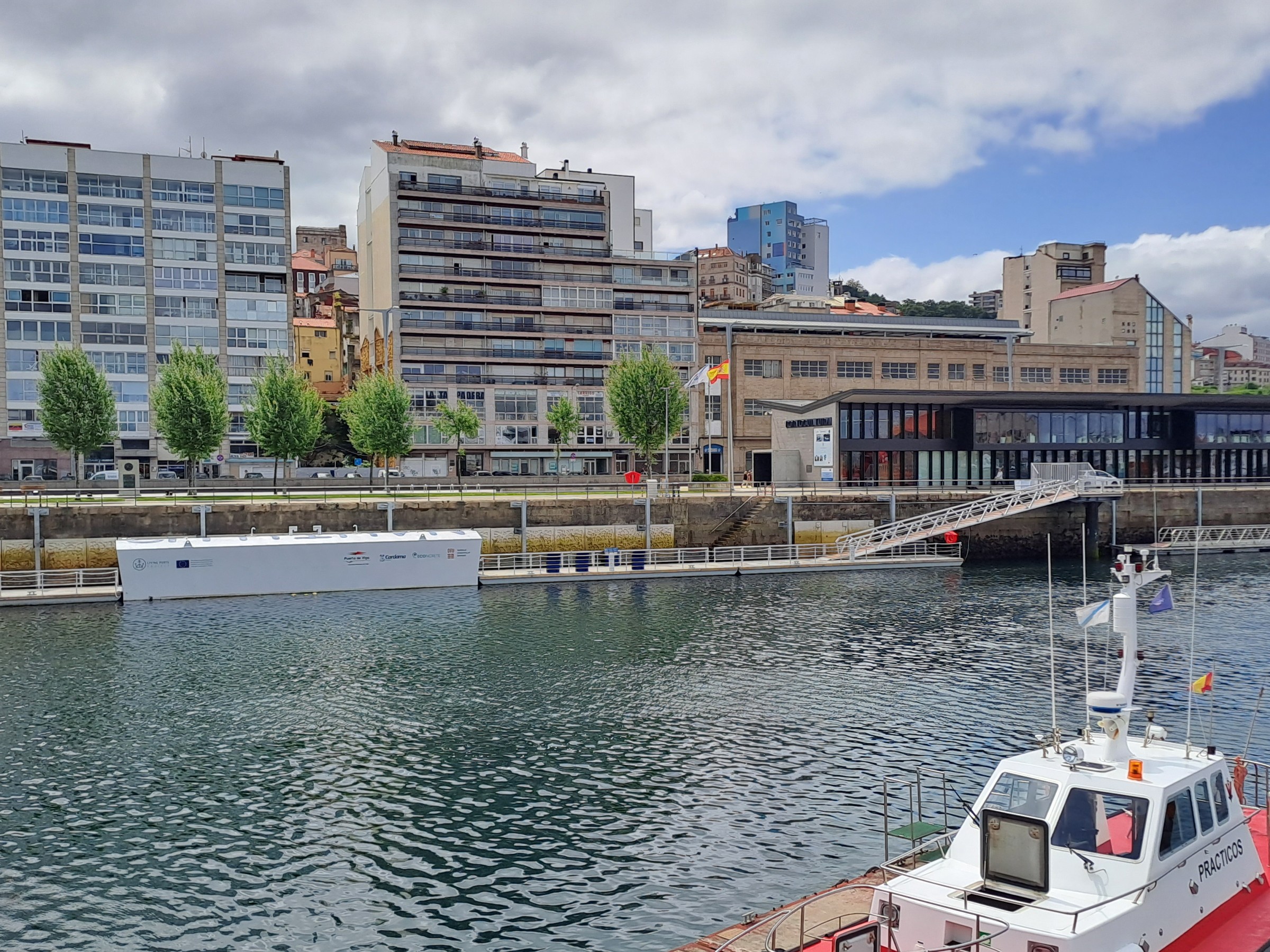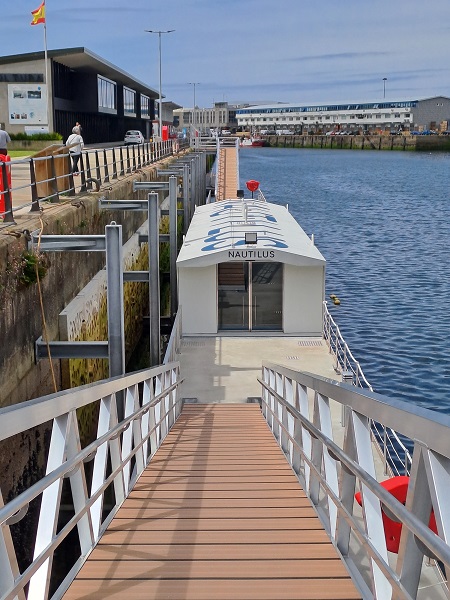ESPO Award 2023: let us present the shortlisted projects: Port Authority of Vigo
02 November 2023
Under the theme “Nature restoration projects in ports benefitting the local community”, the ESPO Award 2023 will go to the port managing body which has developed innovative ways to develop these new roles and combine port development with successfully protecting and restoring nature in and around the port area to the benefit of the citizens and local community. The winning project will be a project which can clearly demonstrate how nature protection and restoration efforts can be successfully combined with port development projects.
The four projects that are shortlisted for this year’s Award are the projects of Port of Cartagena (Spain), Guadeloupe Port Caraïbes (France), North Sea Port (Belgium- Netherlands) and Port of Vigo (Spain).
ESPO is proud to present the shortlisted projects before the winner is announced during the traditional ESPO Award Ceremony and Dinner taking place on 7 November at the Art and History Museum in the Cinquantenaire in Brussels. The ESPO award ceremony will be celebrated together with the 30th anniversary of ESPO. Discover below the project of the Port of Vigo.
Port Authority of Vigo, Spain
LIVING PORTS
Congratulations! You have been shortlisted for the ESPO Award 2023! Could you briefly describe your project?
It is an honour for us to have been shortlisted for the ESPO 2023 Award, we are very excited to present you the LIVING PORTS project. LIVING PORTS project is pioneering port sustainability with innovative technology designed to encourage the development of rich and diverse marine life as part of coastal marine infrastructure such as seawalls, breakwaters and urban piers. This is important because 70% of coastal and marine infrastructure is built with traditional concrete, which is toxic to many marine organisms and this requires costly maintenance. LIVING PORTS aims to transform the "gray" infrastructure of the port environment into "green" infrastructure, which evoke natural processes in artificial environments. The ECOncrete® technologyis beneficial for both, thriving ecosystems and high-performance concrete structures.This innovative technology integrates ecological considerations into the construction elements of coastal and urban infrastructures, while contributing to structural durability and longevity. LIVING PORTS project includes two large-scale demonstration sites: a 310 m2 ECOncrete® seawall panel with a surveillance deck and an underwater observatory (The Nautilus) developed by Cardama Shipyards; and 100 ecologically-designed Coastalocks to provide shoreline stabilisation as well as habitat creation and ecological enhancement. During the project the biological and structural monitoring is led by the Technical University of Denmark in coordination with the Port of Vigo and ECOncrete®.

How has your project contributed to the successful protection and restoration of nature in and around the port area to the benefit of the citizens and local community? Could you tell us more? How does your project contribute to the societal integration of the port?
The LIVING PORTS project has made significant strides in preserving and restoring the natural environment within and around the port area, providing numerous benefits to the local community and its residents.
Structural Advancements and Cost Efficiency: The use of ECOncrete® technology boosts the growth of marine life on the surface of infrastructure elements. The growth of benthic communities acts as a protection against erosion and increases the overall resistance of these elements. This innovation not only translates into savings on maintenance costs but also significantly reduces the carbon footprint, as ECOncrete® incorporates almost zero-carbon additives using recycled and repurposed materials.
Ecological Impact: Science-backed ECOncrete® techniques enrich marine ecosystems. They promote natural processes like calcification and photosynthesis, which absorb CO2. An additional benefit is a significant reduction in noise pollution in the port by up to 50%. Acting as a carbon sink, each square meter of ECOncrete® infrastructure absorbs around 120g of carbon annually. Furthermore, the technology encourages algae growth, enhancing photosynthetic activity in the area. The unique combination of innovative mixes, rough surface textures, and 3D designs aids in promoting colonization by a wide variety of marine fauna and flora, boosting biodiversity.
Durability, Climate Resilience, and Sustainable Construction: ECOncrete® represents a significant shift towards sustainable construction, offering a concrete solution that is not only more resilient against the adversities of climate change but also long-lasting. Its bioreinforced nature ensures a strengthened structure, making it more adaptive and enduring in the face of environmental challenges.
Societal Integration and Outreach: Beyond ecological and structural advancements, LIVING PORTS plays a pivotal role in the societal integration of the port. Economically, it fast-tracks the market's acceptance and integration of eco-inspired concrete technology through tangible, large-scale demonstrations. On the social front, there's an emphasis on reinforced environmental education and community engagement, facilitated through a range of community programs and robust communication and dissemination strategies. Highlighting our commitment, the underwater observatory "NAUTILUS," launched in March 2023, has already garnered the interest of over 30,000 visitors, serving as a beacon of environmental consciousness.
Could you describe the original and innovative character of your project?
LIVING PORTS project is pioneering, not only for using innovative technology, but also for representing the next generation of port infrastructures, paving the way for greener marine construction. This project, funded by the European Union's research and innovation program (Horizon 2020 program), serves as a model for sustainable port infrastructures worldwide, as this innovative initiative transforms coastal and marine infrastructures by combining structural, environmental and socio-economic benefits. The project represents the first large-scale experience in the installation and use of the innovative ECOncrete® technology for port infrastructures. The project is an emblematic example of nature-friendly port infrastructure, a "living port" from an ecological and social point of view, a place that constitutes a meeting point where the relationship between the port and the city is strengthened. The innovation of the Living Ports project lies in embedding ecological knowledge, through ECOncrete® technology, into the design and construction of coastal infrastructures. It also includes an innovative environmental awareness component, in which the underwater observatory actively involves the public in the restoration process carried out in the project, raising environmental awareness and promoting integration with the port environment.
Why do you think your project deserves to win the ESPO Award 2023?
LIVING PORTS stands at the forefront of blending green infrastructure with the sustainable evolution of seaports and coastal areas by contributing to their restoration and resilience, as well as introducing innovative technology that is cost-effective, scalable and applicable to the traditional concrete maritime coastal infrastructure industry. This project has demonstrated the ability of the ECOncrete® technology to integrate into living places, enhancing biodiversity by supporting a rich and abundant marine life that will help to significantly reduce noise and carbon footprint. Winning this award will give greater visibility to this project and will allow us to set an example to other seaports as we move towards Blue Growth.

Related documents
No attachments.
